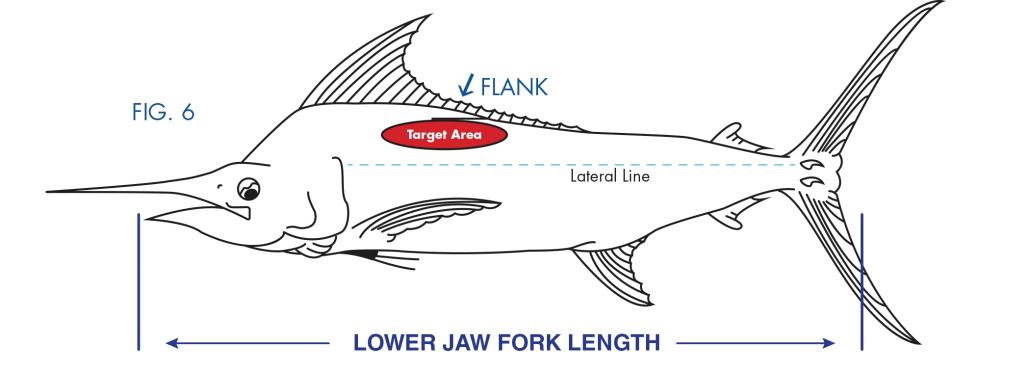










We welcome in 2025 with a full slate of boat shows, fishing tournaments, regattas and holiday boat parades!
The Gulfstream Current runs close offshore to the storied Fort Lauderdale coastline. The water is warm and clear and teeming with baitfish and all kinds of aquatic big game. During the cold fronts of winter and early spring, the seas pick up to 8 to 10 feet plus and the sailfish go nuts.
The Sailfish Challenge – the most prestigious sailfish series on the planet – takes place February 19 - 23 with the awards dinner and ceremony at Galuppi's in in Pompano Beach. This is part of the new Bluewater Movement’s Florida Sailfish Cup, a new statewide tournament from Fernandina Beach to Key West, which goes from November 1, 2024 to May 31, 2025. A $1,000,000 purse is being offered up, so get your gear ready, fuel up and head out!
For all ye sailors who love to race on the high seas, the 2025 Fort Lauderdale to Key West Race between the Lauderdale Yacht Club and the Key West Yacht Club is on for February.
Go to www.keywestrace.org to sign up. Should be quite a party in Cayo Hueso for the participants who make it there with or without all their rigging intact. The 52nd Annual Holiday Parade takes place DECEMBER 14, 2024 starting in the Downtown Area at 6:30 PM with a preshow of non-motorized vessels at 6:00 p.m. The Seminole Hard Rock Winterfest Boat Parade will stage on the New River in downtown Fort Lauderdale, along the docks west of Stranahan House to the Broward Center for the Performing Arts.
The Parade starts at Stranahan House traveling East along the New River in Fort Lauderdale to the Intracoastal Waterway as it continues North to Lake Santa Barbara in Pompano Beach. It’s 12 Miles from the “Best Show on H20.”
The Parade takes approximately 2 and 1/2 hours to view from one location (starting locations stagger as you travel north).
Private boats to the giant showboats and corporate megayachts will be adorned with hundreds of thousands of lights, music, entertainment, decorations, celebrities, musical groups, beauty queens, and many other exciting entries expected to be viewed by over one million spectators.
So, get your vessels ready for an awesome 2025. Be safe and have lots of fun cruising the local waterways and enjoying our beautiful Mother Ocean. Cheers!
















• 2 - 5 S T E P YAC H T & B O AT P O L I S H I N G
• YAC H T & B O AT C E R A M I C C O AT I N G S
• YAC H T & B O AT R E C O N D I T I O N I N G
















Modifying the types of hooks you use can significantly affect a fish’s chances for survival after it is released. When fishing with natural bait (dead or alive), IGFA strongly encourages the use of non-offset circle hooks. Extensive research on species from salmon to sailfish has demonstrated that circle hooks gut hook significantly fewer fish without sacrificing catch rates. Lures that have treble hooks should have the barbs bent down or removed to facilitate easier hook removal.
Interested in the science behind circle hooks? Read Circle hooks, 'J' hooks and drop-back time: a hook performance study of the south Florida recreational livebait fishery for sailfish, Istiophorus platypterus published in Fisheries Management and Ecology in 2007.
If you’re not going to photograph your fish or document it for record purposes, the best method is to not remove the fish from the water. In-water releases can be aided by the use of de-hooking devices that eliminate the need to boat the fish and keep hands safe distances away from the fish. If the fish has swallowed the hook, it is much better for the angler to cut the leader as close to the fish as possible, rather than trying to forcibly remove the hook.
If a fish needs to be removed from the water to remove the hook and/or document it for record purposes, anglers should use either their hands or knotless, rubberized landing net. Most small to moderately large sized fish can be landed by hand. Ideally, this should be done with wet hands or soft, wet gloves to minimize slime and scale loss. Lip gripping devices may be used to help subdue fish. However, they should not be used to hoist fish vertically out of the water, as this can cause damage to jaw muscle and bone as well as to internal organs. The best method for removing fish from the water is to grip the fish or the lower jaw and support the fish’s underside. Again, the point is always to hold fish horizontally and not vertically.



FEBRUARY 2025 Pre-register
Early Entry Cost Ends: 2/5/25
$1200 per boat (plus tax)
Late Entry Cost After: 2/5/25
$1,700 per boat (plus tax)
Payment by Check Must be postmarked by 2/5/25. Mail To: Bluewater Movements, Inc. PO Box 50114
Lighthouse Point, FL 33074
No checks accepted at Kick-Off party

February 19, 2025 | Kickoff Party “Galuppi’s” At Pompano Beach Golf Course 7:00 PM - 10:00 PM Captain’s Meeting 8:00PM
Activities • Final Registration Live Performance - The Grunt Wagon
Food & Bar Hospitality
Auction • Sponsor Displays
February 21 & 22, 2025
COMPETITION DAYS
Lines In @ 8:00 AM
Lines Out @ 4:00 PM
Deadline to submit release cards and media 6:00 PM
Live Scoring

February 23, 2025
AWARDS 11:00 AM - 1:00 PM
SUNDAY AWARDS BRUNCH 11:00 AM
AWARDS CEREMONY 12:00 PM
Galuppi's 1103 N. Federal Hwy. Pompano Beach, FL 33062
Keeping Broward County Reefs
Healthy Just as Broward County’s beaches attract tourists, the ocean environment draws diving and fishing enthusiasts from all over the world and Broward is home to part of the only coral reef in the continental United States. The reefs extend the entire length of the County and are separated into three distinct north-south tracts (inner, middle, and outer). These reef tracts range in depth from 15 feet on the inner reef tract to 90 feet on the outer tract.
There are 25 permanent research sites located offshore of Broward’s 23 miles of coastline and these sites have been monitored periodically since the 1980s, and continuously since 1997.At each monitoring site, the numbers and types of corals and sponges are recorded to compare differences in between sites and over time. Numerous one square-meter areas of reef are photographed and studied to monitor changes in the reef environment, and fish counts are carried out to determine the number and types of fishes found at each of the study sites.
In addition, sediment collections are sampled at each of the sites to determine the amount and grain size sediments that settle onto the reef. The results of this biological monitoring not only provide a time series record of Broward County’s reef system, but also assist in the identification of factors which may damage organisms or reduce the populations of corals and sponges on the reef.
Since 1982, the Broward County has created over 112 artificial reefs off our shores. The reefs, which are designed to create a new stable substrate, are made from a variety of materials including ships, barges, oil rigs, limestone rock, concrete culverts, engineered concrete artificial reef modules, and other environmentally suitable artificial reef materials. These materials are placed at various depths where they quickly become habitat for a large number of marine organisms. Through the artificial reef program, we are not only creating additional habitat for various marine organisms and fish, but are also protecting the reefs as boat
anchors and scuba divers can cause physical damage to natural reefs by breaking coral or “uprooting” other attached marine animals. This will benefit both our environment and our economy for years to come. Tax deductible donations of material, services, and transportation costs have been the keys to the success of the Artificial Reef Program and donations are always welcome.
When creating an artificial reef, it is important to understand how the materials will act over time in the ocean. Ships, concrete, and limestone boulders are materials that have been used locally and worldwide and have been very successful in creating reefs while tires are an example of material that may not be suitable for use as an artificial reef. Broward County is working with State and Federal agencies to remove a failed artificial reef constructed wholly from tires.
Many scuba divers have found artificial reefs to be beautiful and exciting dives. The artificial reefs in Broward County are diverse in type, depth, and level of diving difficulty. You can follow these guidelines to help make your diving on Broward’s artificial reefs a safe and enjoyable experience:
• Never dive alone; always have a dive buddy with you.
• At a minimum, you should be Wreck Diver SCUBACertified. This certification is available through most dive facilities in Broward County.
• Always assess the weather conditions before leaving the dock and again at the wreck site. Once on the site, you and your dive buddy can determine if the wave height, current, and/or visibility will allow for a safe dive.
• When diving on an artificial reef, you should always leave someone on board the boat that can operate the boat in an emergency. This person should maintain a watch for divers surfacing downstream of the artificial reef.


• Be aware of the hazards of fishing line and other debris that may snag a diver while on an artificial reef. Each diver should carry a knife and/or wire cutters to avoid entanglement.
• It is not recommended that you go inside any wreck. The most colorful and beautiful corals, sponges, and fish are on the outside of the wreck.
• Pre-plan your dive and stay with that plan to avoid trouble.
• Finally, only dive within your capability.
Many different types of fish can be caught over or near artificial reefs. Reefs deeper than 200 feet are especially productive for large open-water predators. Amberjack, strong fighting fish that can weigh over 100 pounds, are one of the most common reef residents.These fish school over the artificial reefs from January to July, with May being the peak month. Other species of wreck dwellers are black, gag, warsaw, and snowy groupers. Giant goliath grouper also make many of the wrecks their home. Additionally, many species, including sailfish, kingfish, Spanish mackerel, barracuda, mutton snapper, and cobia appear to use the artificial reefs as feeding areas and can be caught in abundance many hundreds of yards from the artificial reef.
For more information on Broward County’s reefs, email Dr. Kenneth Banks or call 954-519-1207 or go to www.broward.org/NaturalResources/BeachAndMarine/Pages/Reefs.aspx



Foundation works worldwide to advance the conservation of billfish and associated species to improve the health of oceans and economies. Considering the context of a planet with over seven billion human inhabitants, conservation strategies must be forward-looking and adaptive. By accounting for the roles of billfish within the marine environment as well as in relation to their interactions with humanity, TBF’s conservation campaigns maintain the flexibility to adapt to emergent threats as well as those which have historically confronted resource managers. TBF employs a multi-tiered, proactive suite of initiatives involving research—both biological and socioeconomic–education, and advocacy projects. As billfish and other highly migratory species are not confined to the territorial waters of any one nation, these strategies must also take into account the differences in culture and law inherent to the international arena. Empowered by an internationally diverse constituent network, The Billfish Foundation is uniquely equipped to do just this.

Established in 1990, The Billfish Foundation’s Tag and Release Program is the largest private billfish tagging database in the world and the cornerstone of TBF’s conservation and advocacy efforts. With more than 220,000 tag and release reports, TBF receives over 15,000 tag and release records annually from across the globe and provides vital information for billfish conservation.
The success of TBF’s Tag and Release program is contributed to the dedicated anglers and captains around the globe that voluntarily tag, release, and report their billfish catches. The deployment of traditional tags and the data gathered from recaptured billfish provides valuable scientific data to further understand growth rates, migratory patterns, habitat utilization, and post-release survival rates. Tag and release data also provides valuable information for stock assessments that are instrumental in a time when industrial longlines represent the largest source of marlin mortality. This valuable data, much of it impossible to measure without the use of traditional tagging, provides the groundwork for conservation minded policy, scientific advancement, and gives insight into the demographics and socio-economic benefits generated from billfishing.
As tagging provides The Billfish Foundation with substance for its conservation efforts, TBF recognizes those anglers and captains that tag and release the most billfish each year at an awards ceremony at the Miami International Boat Show. The annual International Tag & Release Competition recognizes members who tag and release the most billfish by species in
each of the world’s oceans. TBF award winners are the ‘who’s who of the billfishing world’ and are those that do not just catch and release a great number of fish, but embody and share a common conservation ethic. As captains and anglers on the water represent the first line in billfish conservation, recognition of their efforts provides a means to illustrate the direct link between catch and release fishing and marine conservation. To recognize the efforts of all of its members, TBF also provides release certificates for those that report billfish tags and releases.
AFTER THE FISH IS LEADERED: Bring the billfish alongside the boat.
Idle the boat forward and maintain this position to allow the billfish to calm down and allow for easier tagging. Never attempt to tag a jumping or thrashing fish. This can be not only dangerous for the health of the billfish but for you too!

NEVER remove the fish from the water. This can result in fatal damage to the fish for two reasons. Excess rubbing and drying can result in the loss of the protective slime coat found on the surface of the fish. Without this protective covering, the fish becomes susceptible to bacterial infections and parasites. Additionally, the skeleton of a billfish is designed for the buoyant conditions of the ocean. Removing the fish from the water, even onto the gunnel, causes the skeleton to come under the full strain of gravity, which can damage the skeleton and internal organs.
It is vitally important that the tag be placed in the proper area: in the dorsal muscle well behind the head and gill plates, above the lateral line and away from all vital organs (see Figure 1). It is not necessary to use a great deal of force to insert the tag. A firm, well-aimed stroke is best. Place the applicator against the fish’s flank and push, inserting the tag until the stopper assembly is pressed against the fish. Improper tag placement or tagging too hard can result in serious injury or death to the fish. Speed tagging often results in injury.
•

South Florida is one of the most vulnerable areas on the United States coast for a hurricane. In 1992, Hurricane Andrew, the most powerful storm in Miami-Dade County, registering as a Category V, and the third strongest in U.S. history with sustained winds in excess of 155 mph, came ashore and destroyed many marinas in south Miami-Dade County. Hurricanes that exceed 110 mph can be expected to occur in south Florida about once every 10 years. The population of Miami-Dade County continues to increase, bringing many boaters with little hurricane experience.
The wind will be the biggest enemy. There are several things to do to help minimize its overwhelming affects. Knowing how to secure your boat and where to keep your boat are the two primary concerns. The most important thing to remember is DON’T WAIT UNTIL THE LAST MINUTE! Being prepared in advance by having a plan and practicing your plan will help to protect your life and property.






